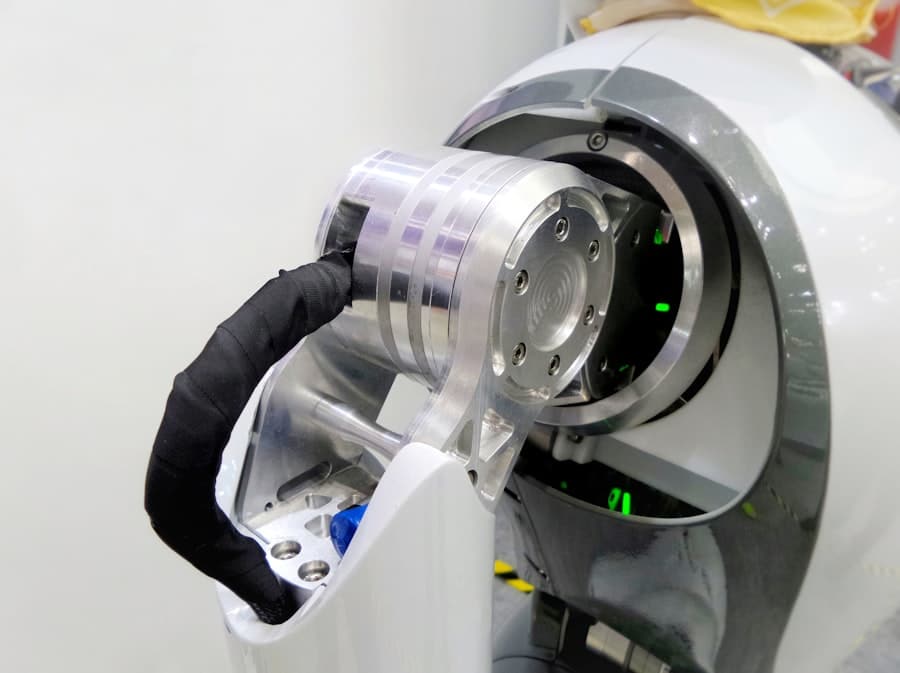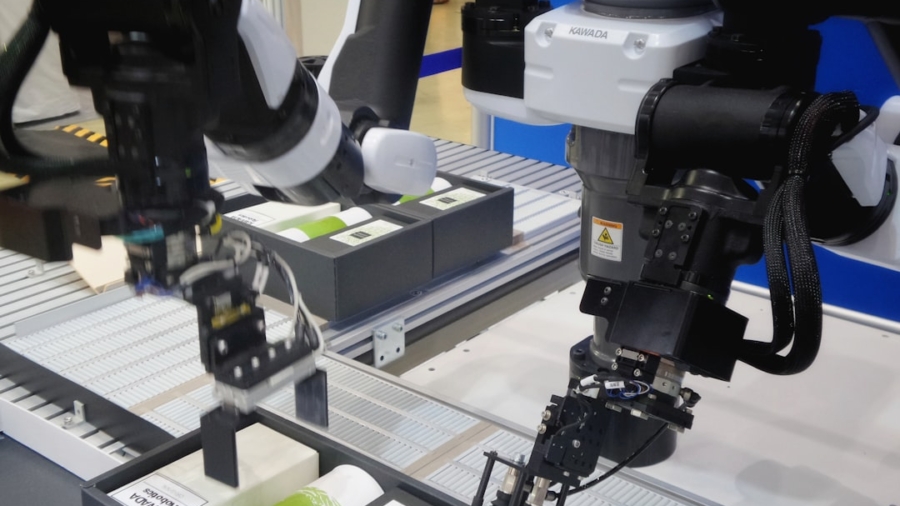The integration of artificial intelligence (AI) into recycling and waste management systems marks a significant evolution in how societies handle waste. As urban populations grow and environmental concerns escalate, traditional waste management practices are increasingly inadequate. The complexity of waste streams, coupled with the need for efficient resource recovery, has prompted the exploration of advanced technologies.
AI, with its ability to analyze vast amounts of data and automate processes, offers innovative solutions to enhance recycling rates and optimize waste management operations. This technological shift not only aims to improve efficiency but also seeks to foster a more sustainable approach to resource utilization. AI’s application in this sector encompasses a range of functionalities, from sorting materials to predicting equipment failures.
By leveraging machine learning algorithms and computer vision, AI systems can identify and categorize recyclable materials with remarkable accuracy. This capability is crucial in a world where contamination of recyclables can lead to entire batches being sent to landfills. Furthermore, AI can streamline logistics, ensuring that waste collection routes are optimized for time and fuel efficiency.
As municipalities and private companies increasingly adopt these technologies, the potential for a more circular economy becomes tangible, where materials are reused and recycled rather than discarded.
Key Takeaways
- AI technology is revolutionizing the recycling and waste management industry by improving efficiency and sustainability.
- The benefits of AI in recycling and waste management include increased accuracy in sorting materials, reduced contamination, and optimized waste collection routes.
- AI technology is used in sorting and processing recyclable materials through advanced sensors, robotics, and machine learning algorithms.
- AI plays a crucial role in optimizing waste collection and transportation by analyzing data to improve route planning and reduce fuel consumption.
- AI contributes to predictive maintenance and equipment monitoring in waste management, leading to reduced downtime and improved operational efficiency.
The Benefits of AI in Improving Recycling and Waste Management Systems
The benefits of incorporating AI into recycling and waste management systems are multifaceted, addressing both operational efficiency and environmental sustainability. One of the most significant advantages is the enhancement of sorting accuracy. Traditional manual sorting processes are labor-intensive and prone to human error, often resulting in high contamination rates in recycling streams.
AI-powered sorting systems utilize advanced image recognition technologies to identify different materials—such as plastics, metals, and paper—at high speeds and with precision. This not only increases the volume of materials that can be effectively recycled but also reduces the costs associated with processing contaminated waste. Moreover, AI contributes to improved decision-making through data analytics.
By collecting and analyzing data on waste generation patterns, recycling rates, and material flows, AI systems can provide insights that inform policy-making and operational strategies. For instance, municipalities can use predictive analytics to forecast waste generation trends based on historical data, allowing them to allocate resources more effectively.
The result is a more responsive waste management system that adapts to changing community needs while promoting sustainable practices.
How AI Technology is Used in Sorting and Processing Recyclable Materials

AI technology plays a pivotal role in the sorting and processing of recyclable materials, transforming what was once a labor-intensive task into a highly automated process. At the heart of this transformation are machine learning algorithms that have been trained on vast datasets of images representing various types of recyclable materials. These algorithms enable machines to recognize and differentiate between materials with remarkable accuracy.
For example, optical sorting systems equipped with AI can identify specific types of plastics based on their color, shape, and texture, allowing for more effective separation at recycling facilities. In addition to sorting, AI enhances the processing of recyclables by optimizing the operational parameters of recycling machinery.
This dynamic adjustment not only improves the efficiency of the recycling process but also minimizes wear and tear on equipment, extending its lifespan. Furthermore, AI can facilitate the development of new recycling methods by analyzing material properties and suggesting optimal processing techniques. This innovation is crucial as the composition of waste continues to evolve with changing consumer habits and product designs.
The Role of AI in Optimizing Waste Collection and Transportation
AI’s influence extends beyond sorting and processing; it also plays a critical role in optimizing waste collection and transportation logistics. Traditional waste collection routes are often based on fixed schedules that do not account for real-time conditions such as traffic patterns or varying waste generation rates across neighborhoods. AI-driven route optimization tools analyze data from various sources—including GPS tracking, historical collection data, and even social media trends—to create dynamic collection schedules that minimize travel time and fuel consumption.
For example, smart waste bins equipped with sensors can monitor fill levels and communicate this information to collection vehicles. When combined with AI algorithms, this data allows waste management companies to prioritize collections based on actual need rather than predetermined schedules. This not only reduces operational costs but also decreases greenhouse gas emissions associated with unnecessary trips.
Additionally, AI can help identify under-served areas or neighborhoods with high waste generation rates, enabling municipalities to allocate resources more effectively and ensure equitable service delivery.
AI’s Contribution to Predictive Maintenance and Equipment Monitoring in Waste Management
Predictive maintenance is another area where AI significantly enhances waste management operations. The heavy machinery used in recycling facilities—such as compactors, shredders, and conveyor belts—requires regular maintenance to operate efficiently. Traditional maintenance schedules are often based on time intervals or usage metrics, which may not accurately reflect the actual condition of the equipment.
AI addresses this challenge by utilizing machine learning algorithms that analyze data from sensors embedded in the machinery. These sensors monitor various parameters such as temperature, vibration, and operational performance in real-time. By analyzing this data, AI systems can predict when a piece of equipment is likely to fail or require maintenance.
For instance, if a conveyor belt shows signs of excessive wear based on vibration patterns, the system can alert maintenance personnel before a breakdown occurs. This proactive approach not only reduces downtime but also extends the lifespan of equipment by ensuring timely interventions. Consequently, organizations can achieve higher operational efficiency while minimizing repair costs.
The Impact of AI on Data Analysis and Decision Making in Recycling and Waste Management

Data-Driven Insights for Strategic Planning
For example, machine learning models can analyze historical waste generation data alongside demographic information to identify trends and patterns that inform strategic planning. Moreover, AI-driven analytics enable organizations to assess the effectiveness of their recycling programs in real-time.
Real-Time Performance Tracking
By tracking key performance indicators such as recycling rates and contamination levels, decision-makers can make informed adjustments to their strategies. This level of data analysis allows for a more precise understanding of the recycling process, enabling organizations to identify areas for improvement.
Tailored Solutions for Community Needs
For instance, if a particular neighborhood shows low participation in recycling initiatives, targeted outreach campaigns can be developed based on demographic insights derived from data analysis. This level of granularity allows for tailored solutions that address specific community needs while promoting higher recycling rates.
Challenges and Limitations of AI in Recycling and Waste Management
Despite its numerous advantages, the implementation of AI in recycling and waste management is not without challenges. One significant hurdle is the initial investment required for technology adoption. Many municipalities and small waste management companies may lack the financial resources necessary to implement advanced AI systems or upgrade existing infrastructure.
This disparity can lead to uneven adoption rates across regions, potentially exacerbating existing inequalities in waste management services. Additionally, there are concerns regarding data privacy and security as organizations increasingly rely on data-driven solutions. The collection of sensitive information related to waste generation patterns raises questions about how this data is stored and used.
Ensuring compliance with regulations such as GDPR (General Data Protection Regulation) is essential but can complicate the deployment of AI technologies. Furthermore, there is a need for skilled personnel who can interpret AI-generated insights effectively; without adequate training or expertise, organizations may struggle to leverage these technologies fully.
The Future of AI in Transforming Recycling and Waste Management Systems
Looking ahead, the future of AI in recycling and waste management appears promising as technological advancements continue to unfold. As machine learning algorithms become more sophisticated, their ability to analyze complex datasets will improve significantly. This evolution will likely lead to even more accurate predictions regarding waste generation trends and material recovery rates.
Moreover, as public awareness around sustainability grows, there will be increased pressure on organizations to adopt innovative solutions that align with environmental goals. The potential for collaboration between different stakeholders—such as municipalities, private companies, and technology providers—will also play a crucial role in shaping the future landscape of waste management. By sharing data and best practices, these entities can develop integrated systems that enhance overall efficiency while promoting circular economy principles.
Furthermore, advancements in robotics may lead to fully automated sorting facilities capable of handling diverse waste streams with minimal human intervention. In conclusion, as we navigate an era marked by rapid technological change and heightened environmental awareness, the role of AI in transforming recycling and waste management systems will be pivotal. The ongoing development of intelligent solutions promises not only to enhance operational efficiency but also to foster a more sustainable approach to resource management that benefits both communities and the planet at large.
In a related article discussing the importance of sustainable energy, one founder realized the potential of sustainable energy and how it can revolutionize the way we approach waste management systems. By incorporating AI technology into recycling processes, we can streamline operations and make significant strides towards a more environmentally friendly future. This article highlights the innovative solutions that can be achieved through the intersection of technology and sustainability.
FAQs
What is AI?
AI, or artificial intelligence, refers to the simulation of human intelligence in machines that are programmed to think and act like humans. This includes tasks such as learning, problem-solving, and decision-making.
How is AI used in recycling and waste management systems?
AI is used in recycling and waste management systems to automate processes such as sorting, identifying materials, and managing waste streams. This technology can help improve efficiency, reduce contamination, and increase recycling rates.
What are some examples of AI applications in recycling and waste management?
Some examples of AI applications in recycling and waste management include robotic sorting systems, smart waste bins with sensors and cameras, and machine learning algorithms for identifying and sorting different types of materials.
What are the benefits of using AI in recycling and waste management?
The benefits of using AI in recycling and waste management include increased efficiency, improved accuracy in sorting materials, reduced contamination, and the ability to process larger volumes of waste. This can ultimately lead to higher recycling rates and a more sustainable waste management system.
Are there any challenges or limitations to using AI in recycling and waste management?
Some challenges and limitations of using AI in recycling and waste management include the initial cost of implementing the technology, the need for ongoing maintenance and updates, and potential issues with the reliability and accuracy of AI systems. Additionally, there may be concerns about job displacement for workers in the waste management industry.

